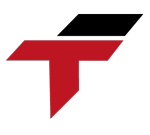In the rapidly evolving world of technology, digital counters play a vital role in a wide range of applications. From measuring pulses in electronic systems to monitoring events in industrial environments, these versatile devices deliver accuracy and reliability.
What is a Digital Counter?
A digital counter is an electronic circuit that counts the number of pulses or events in a given period. Unlike analog counters, digital counters operate with binary signals, representing the count result as a series of binary digits.
These counters typically consist of a series of flip-flops connected in a specific configuration to increment or decrement a number.
How does a Digital Counter work?
Digital Counter operates on the principle of counting electrical pulses generated from a signal source such as sensors, switches or pulse generators. When each signal arrives, the counter will record a unit and increase or decrease the display value according to each received pulse.
- Input signal: Digital Counter receives signals from input devices such as optical sensors, electromagnetic sensors, mechanical switches or pulse encoders. This signal is usually in the form of electrical pulses with a certain period and frequency.
- Signal processing circuit: After receiving the signal, the processing circuit will convert and analyze the electrical pulses to identify the number of pulses or the time between pulses.
- Display results: The final value after being processed will be displayed on the LED or LCD screen. This interface is often clear, easy to read, helping users easily track information.
- Output signal (optional): Some Digital Counters can output signals to activate other devices such as alarms, circuit breakers or automatic machine controls.
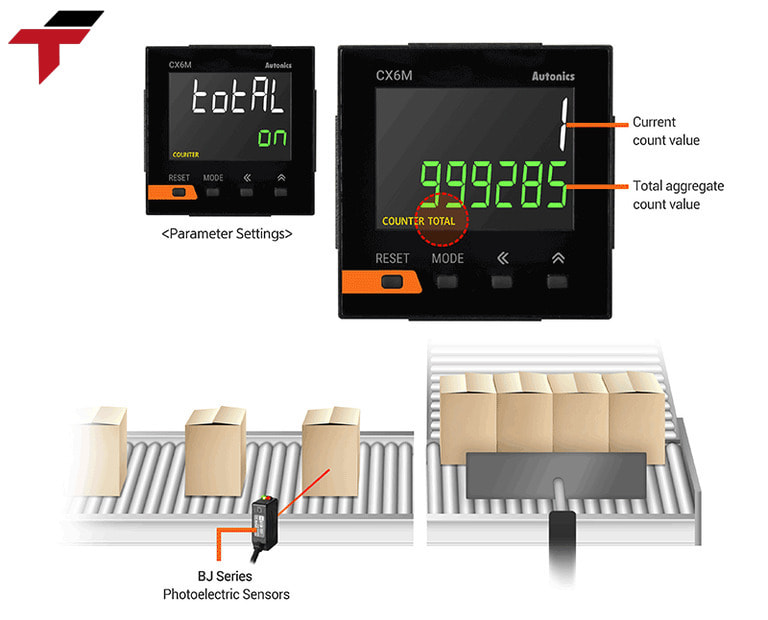
Operating principle of Digital counter
How many types of Digital Counter are there?
Digital Counters can be classified based on many different criteria to suit each specific usage need
By counting method
- Up Counter: operates by counting up the value each time an input pulse signal is received.
- Down Counter: With the function of counting down the value when the signal is activated.
- Up/Down Counter: provides flexibility by supporting both counting directions, increasing or decreasing depending on the input signal.
By application
- Time Counter: Used to track and count the time interval between events.
- Frequency Counter: specializes in measuring the frequency of electronic signals.
- Quantity Counter: Plays an important role in counting the number of products or specific events.
By input signal type
- Electromagnetic Counter: Processes pulse signals from electronic devices.
- Optical Counter: uses optical sensors to count objects moving through the sensor area.
- Mechanical Counter: Operates manually and is often applied in simpler applications.
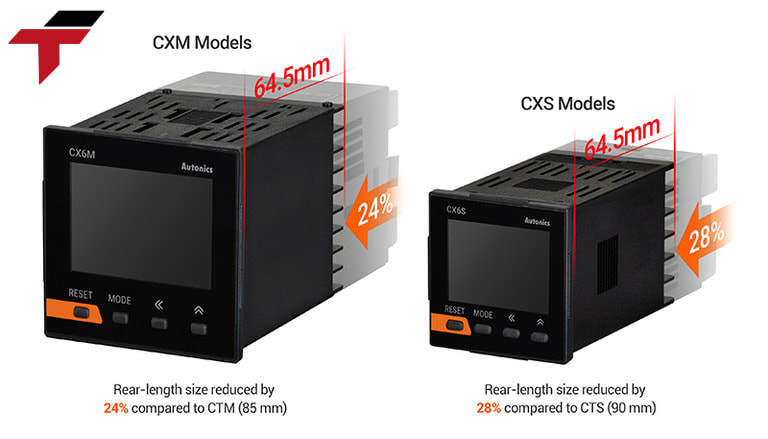
How many types of Digital Counter are there?
What are the advantages of Digital Counter?
Digital Counter is not just a simple counting tool but also a useful solution for many industrial and life fields. Let’s explore the outstanding benefits that this device brings.
- Accuracy: Digital counters provide higher accuracy because they operate with binary signals that can be processed precisely.
- Reliability: Digital counters have been designed to be more stable and reliable than traditional counters.
- Flexibility: Digital counters can be programmed to perform many different functions, making them versatile for many applications.
- Easy to interface: Digital counters can easily interface with other digital systems, allowing for seamless integration into more complex circuits.
- Low cost: Digital counters are generally lower in cost than other counters, making them a cost-effective solution for many applications.
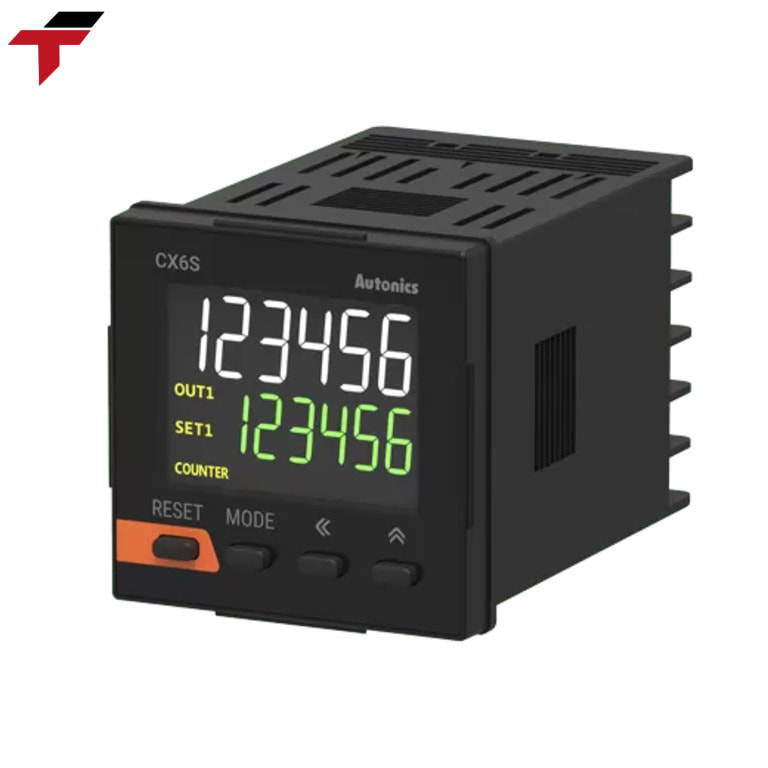
Advantages of Digital counter
Things to consider when choosing a Digital Counter
- Input signal type: Make sure the counter is compatible with signals from other sensors or devices.
- Display capabilities: Choose a display that meets your size and brightness requirements.
- Additional features: Support functions such as timers, alarms, or connections to other systems.
- Counting range: Consider a Digital Counter with a counting range that fits the quantity you need to manage.
When choosing a digital counter, start by clearly defining your needs, then carefully consider the specifications, features, quality, reliability, and budget. Choosing the right product will ensure work efficiency and cost savings in the long run.
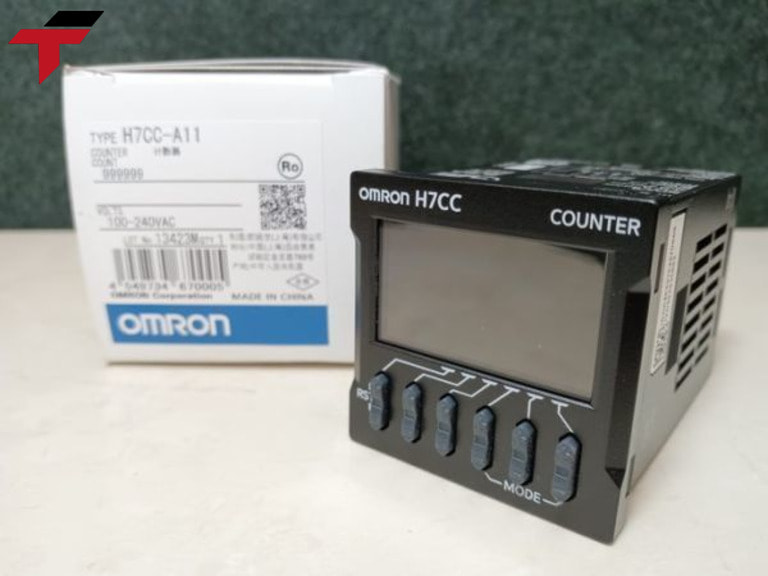
Notes when buying Digital Counter
Applications of Digital Counters
- Electronic systems: Digital counters are essential components in electronic systems, such as processors, memories, and control circuits. They are used to generate clock frequencies, perform timing operations, and control data flows.
- Industrial automation: In industrial settings, digital counters are used to measure, monitor, and control various processes. They can count the number of products on a production line, measure the speed of machinery, and control the movement of robots.
- Measurement devices: Digital counters are important in measurement devices, such as frequency meters, oscillators, and logic analyzers. They provide accurate and reliable measurements of electronic signals and events.
- Digital clocks: Digital counters are the basis for digital clocks, which keep track of time and provide accurate displays of hours, minutes, and seconds.
- Medical Applications: In medical equipment, digital counters are used to monitor vital parameters, control drug delivery, and perform various diagnostic and treatment-related tasks.
Conclusion
A Digital Counter is not only a common device but also an important tool in process management, measurement, and automation. With accurate counting ability, fast processing speed, and high flexibility, this device has become an indispensable choice in many industries.
In short, investing in Digital Counter is investing in accuracy and efficiency in operation. This is the optimal solution for businesses that want to improve competitiveness and achieve sustainable development.
